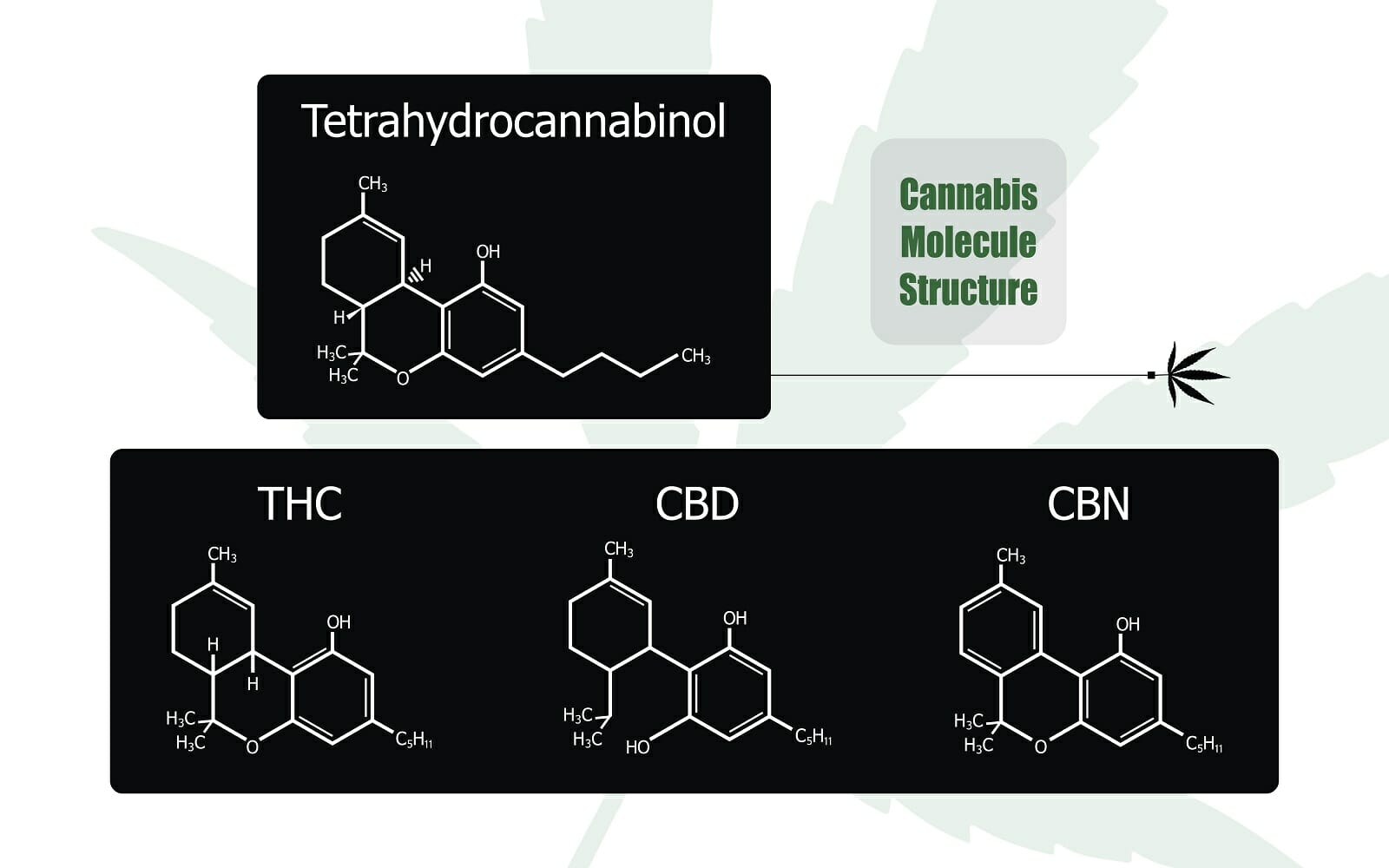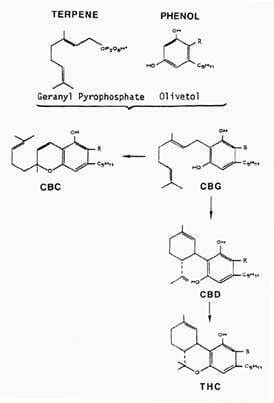Terpenoids, Trichomes & Cannabinoids
Part 2: How They Form


Written by Mike Steffes – Quest Dehumidifiers


Cannabinoid synthesis pathway
As mentioned previously, cannabinoids are produced via the joining of a terpene and a phenol component. The terpene is produced in the plastids, while the phenol is converted and stored for use within vacuoles. Cannabigerol (CBG) is the first cannabinoid in the cannabinoid synthesis pathway (biochemists call stepwise joining processes “pathways”). CBG then undergoes chemical change to form either cannabichromene (CBC), or cannabidiol (CBD). Slight additional chemical restructuring changes CBD into delta 9-tetrahydrocannabinol (THC).
The most common cannabinoid sequence (that everyone in the business should know)–
CBD can be converted into THC, which naturally degrades (oxidizes) into CBN.
In words-
Cannabidiol can be converted into delta 9-tetrahydrocannabinol, which naturally degrades (oxidizes) into cannabinol.
These two sections touch on the next level of detail (possibly useful during technical discussions.)
Plastids (source of terpenes)
Plastids are “sac-like” organelles, generally involved in either the manufacture or storage of various plant substances. They can be thought of as specialized factories within the cell. A mature plant leaf cell may contain 100-150 plastids. All plastids develop from proplastids, relatively simple, undifferentiated plastids. The 3 major named types are chloroplasts, chromoplasts, and leucoplasts.
Chloroplasts provide the machinery of photosynthesis that all plant life is based on. Chloroplasts contain the green-pigmented molecule chlorophyll. Etioplasts (non-pigmented, white plastids) develop in dark grown tissue; these convert to the normal green chloroplasts if light is restored.
Chromoplasts are common in flowers and fruits. They contain yellow, orange, and red fat-soluble pigments—the carotenoids (beta carotene, of carrots; and lycopene, of tomatoes, are examples). Chromoplasts convey information about ripeness, serve as attractants, or provide warnings.
Leucoplasts are non-pigmented plastids responsible for specialized functions. For example, amyloplasts are responsible for starch production, and elaioplasts (elioplasts) synthesize and store plant oils. Within leucoplasts the MEP/DOXP pathway is responsible for the formation of essential oil monoterpenes, linalyl acetate, some sesquiterpenes, diterpenes, and some carotenoids.
One other plastid not often discussed in popular texts is the gerontoplast. Gerontoplasts develop from chloroplasts during the senescence of leaf tissue. Their purpose is to affect a controlled dismantling of the photosynthetic machinery during senescence. They make the amino acids and nitrogen of the chloroplasts available to the plant for other uses—generally reproductive use. Stomatal guard cell chloroplasts are the last plastids in the leaf to break down. This highlights the evolutionary importance to the leaf of gas (CO2, oxygen, and water vapor) exchange.
Vacuoles (source of phenols)
Vacuoles are much simpler than plastids. At a basic level, they are just sacs filled with cell sap. The sap itself consists of water, small organic and inorganic molecules, sugars, and proteins; their pH measures acidic. The low pH allows degradative enzymes to function, for example, those responsible for splitting the conjugated molecule phenol-glucoside. This organelle has no basic shape or size; its structure varies according to the needs of the cell. Within specialized cells, vacuoles can hold appropriate materials for their purpose. The water pressure within vacuoles (turgor pressure) allows plants to stand upright, or to wilt when the pressure reduces. Vacuoles often hold water-soluble anthocyanin pigments that can appear as red, purple, or blue, depending on the pH. Vacuoles are also commonly used to hold secondary metabolites, such as alkaloids and phenols.
